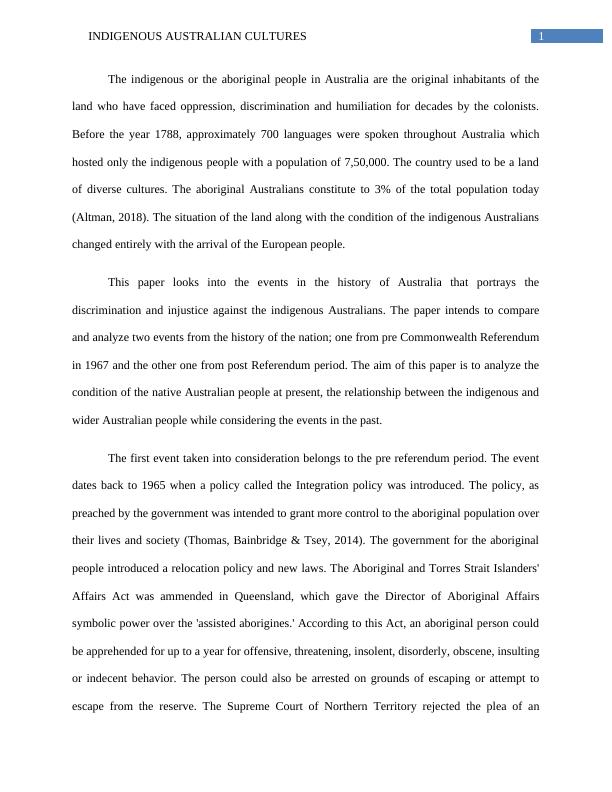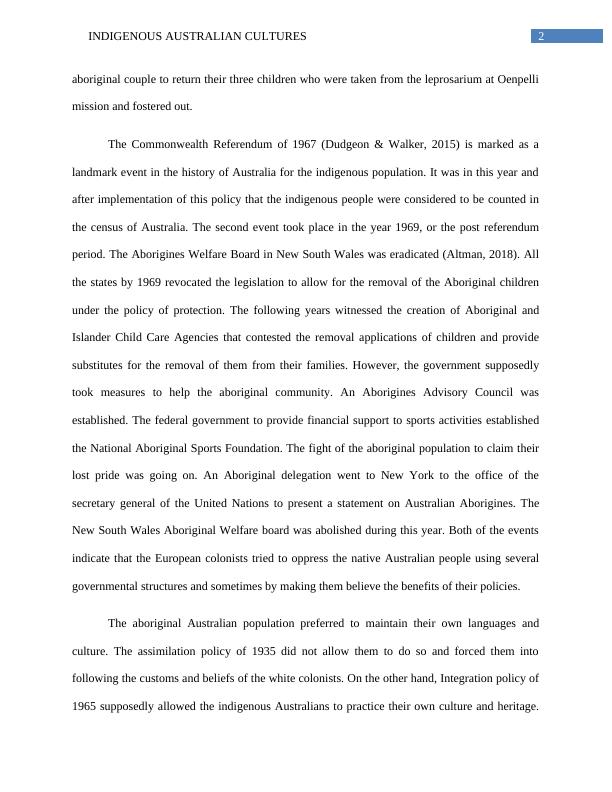Indigenous Australian Cultures
8 Pages2320 Words477 Views
Added on 2023-06-08
About This Document
This paper looks into the events in the history of Australia that portrays the discrimination and injustice against the indigenous Australians. The paper intends to compare and analyze two events from the history of the nation; one from pre Commonwealth Referendum in 1967 and the other one from post Referendum period.
Indigenous Australian Cultures
Added on 2023-06-08
ShareRelated Documents
End of preview
Want to access all the pages? Upload your documents or become a member.
Assignment on Indigenous Australians
|7
|1588
|62
Evolution of Australian Policy for Indigenous People
|9
|2015
|58
Indigenous Australian Histories and Cultures: Contemporary Realities
|8
|1889
|96
Socio-Cultural and Historical Context of Aboriginal and Torres Strait Islander Australians
|5
|946
|495
Repealing Section 51(xxvi) of Australian Constitution: A Step towards Eliminating Racial Discrimination against Indigenous People
|9
|2466
|242
Critical Analysis of Australian Policy and Historical Events in Relation to Indigenous Australian Peoples
|8
|2102
|318



